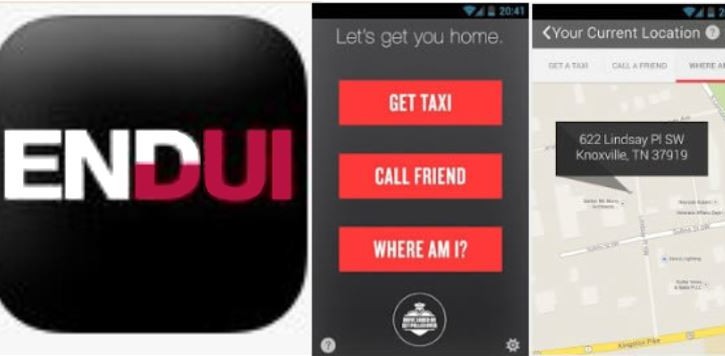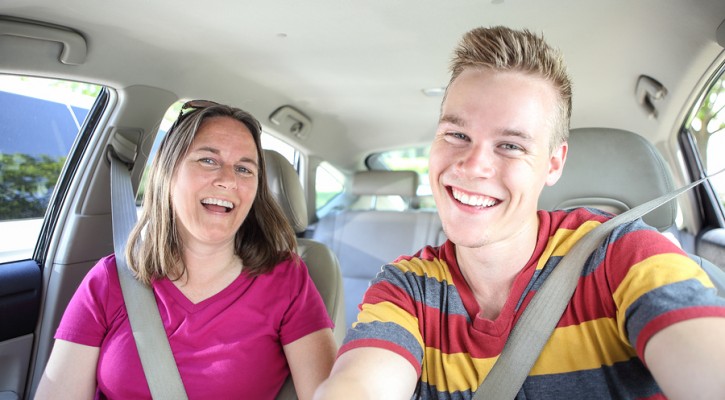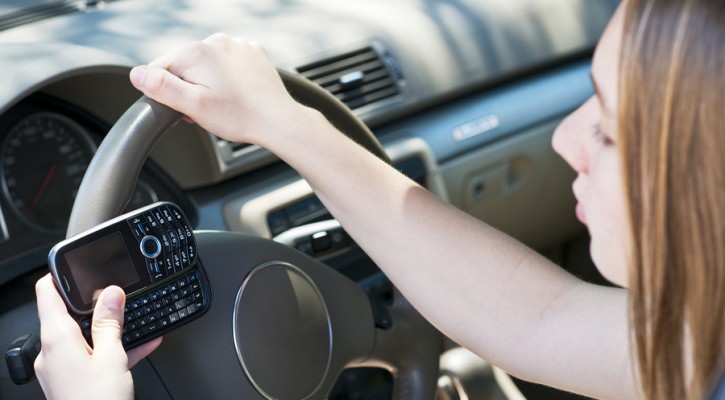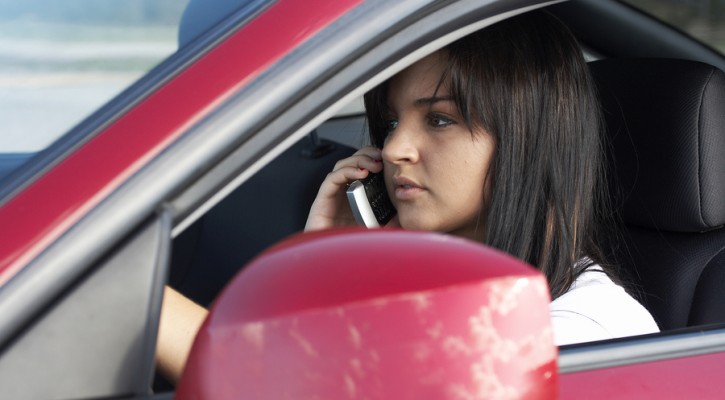Search results for "apps"

Stay Safe With Spring Break Apps
March 10, 2016
For those headed out of town for spring break, whether it be to a sunny beach or a snowy ski slope, your vacation can create a lifetime of fond memories or, with one mistake, a lifetime of regret. Here are a couple of spring break apps to help you avoid that lifetime of regret.
A lot of students on spring break give in to the urge to drink and the lack of judgment that comes with alcohol use can lead to trouble. Police in spring break locales are beefing up their DUI patrols and are on the lookout for any driver that might show signs of being under the influence of alcohol. It’s such a big problem in spring break cities that the local police have no tolerance for driving under the influence and are very unforgiving.
One way to stay out of trouble is to decide on a plan before you go out to drink. If you decide beforehand that you’ll use a designated driver or call a cab to get home, chances are that you’ll stick with that decision but, if you wait until after you’ve been drinking and your judgment is affected, you may not make such smart choices. If you feel you must drink, here are a couple of spring break apps that, hopefully, will keep you out of trouble.
ENDUI (as in End DUI) is an app that warns you if you’ve had too much to drink. The user plugs in their sex, height, and weight and then, by telling it how many drinks have been consumed, it calculates your approximate Blood Alcohol Content (BAC). The app also has games that can test your reaction time. If you decide, before you go out, to limit your drinking, this can be a good tool to warn you when you’ve reached your limit. However, the app only gives an approximate BAC and can’t be used to determine your actual BAC. One drink, such as certain cocktails can have several shots and have up to four times the alcohol content of a typical drink. Only a breathalyzer or blood test can give an accurate BAC reading.
Another app called “SaferRide”, created by the National Highway Transportation Safety Administration (NHTSA), doesn’t try to determine your BAC but, instead, can locate and call a local taxi service for anyone who needs a ride home. It can also hold a list of designated drivers that the user pre-programs into the app. This app is ideal for those on vacation in an unfamiliar city.
Both of these handy spring break apps are free and available for download:
SaferRide – Android, or Apple iOS.
Remember that buzzed driving is impaired driving. Make your spring break a fond memory and not a regret.

Teens Drive Better When Mom Comes Along
May 8, 2015
Teens drive better when mom comes along and they feel good about it too according to a study conducted by the Beckman Institute for Advanced Science and Technology, University of Illinois, Urbana – Champaign.
In this novel study, 25 fourteen year old teens were each placed in an fMRI machine that allowed the researchers to view and record their brain activity while driving a computer simulated driving course. The fMRI machine shows blood flow to areas of the brain that are most active. The teens were paid for their participation but they were also told that, if they scored the fastest time, they would get more money.
The course had 26 intersections and the timing of the lights and the presence of cross traffic varied so that the teens wouldn’t experience the same traffic patterns each time. If the teen stopped at a traffic light, it cost them three seconds added to their time. If they attempted to run a red light and were involved in a “crash,” it cost them 6 additional seconds.
When teens drove alone, they were much more likely to try to make it through a yellow light before it turned red. If they made it through safely, without costing them any more time, the researchers were able to see more blood flow to the reward center of the brain. In other words, the teens felt good about their decision and you could witness that good feeling as it appeared in the brain.
When the teens were told their mom was watching, the teens drove much more carefully and tended to stop when they encountered a yellow light. The strange thing is that, with mom “in the car,” the same reward area of the brain lit up when they drove safely.
It appears that, if a parent is along, teens tend to take fewer chances and they actually feel rewarded by driving in a safe manner.
Of course mom can’t be in the car at all times but there are systems that allow moms to look over their teen’s shoulder. There are a variety of apps and plug-in systems that report if the teen is driving aggressively, turn off the cell phone and inform the parents of the teen’s location. If only they could bake cookies too.
Read more: Having Mom in the Car Changes Teen Driver’s Brain

Teen Driving App Effective In Modifying Teen Driving Behavior
February 9, 2015
A teen driving app for smartphones, developed by the University of Minnesota’s HumanFIRST Laboratory, is showing a lot of promise as an effective tool to modify teen driving behavior and keep teen drivers safe on the road.
There have been a lot of apps and different products developed over the years with the same intent but the developers of this app claim that this is the first developed based on years of scientific research.
Funded with $2.5 million by the Minnesota Department of Transportation, the HumanFIRST Laboratory spent almost ten years examining the issues surrounding teen crashes and developing the app. Those studies were followed up by a year-long, in-vehicle study involving teens and their parents.
The teen driving app is known as the Teen Driver Support System (TDSS) and among other things, the app:
- Prohibits the use of cell phones while the vehicle is in motion except to make 911 calls.
- Warns the teen driver if he or she is speeding or running a stop sign or red light.
- Warns that the teen is driving aggressively.
- Warns the teen that parents will be notified if the dangerous driving behavior continues.
- Notifies parents via text message if the warnings fail to stop the dangerous driving behavior.
- Provides parents with a website that documents the teen’s driving behavior over a longer period of time.
In the in-vehicle study, cars belonging to teen drivers were outfitted with instrumentation to record their driving behavior and the teen drivers were divided into three groups:
- Drivers with no app (control group).
- Drivers with app that provided warnings but didn’t notify parents.
- Drivers with app that provided warnings and notified parents.
The teen drivers without the app showed a greater tendency to engage in distracting and risky behaviors such as, speeding more than seven mph over the posted speed limit and using the cell phone both for calls and texting while driving. The app that only provided warnings was highly effective in modifying teen driving behavior but, as might be expected, the app that provided both warnings and parental notification had the most dramatic effect on the teen’s driving behavior.
Both the teens and parents involved in the study gave the driving app high marks although, also to be expected, the teens weren’t as enthusiastic about the app as their parents:
- 60 to 75 percent of teens had a favorable opinion of the system.
- More than 90 percent of parents had a favorable opinion of the system and;
- 90 percent of parents would recommend the app to other parents of teen drivers.
While the TDSS teen driving app isn’t yet available for general use, the University of Minnesota’s Office for Technology Commercialization is studying the system and the team hopes it will be available for general use within a year.
Read more: App developed at U alerts teens, parents to risky driving
PowerPoint presentation with study results: Supporting New Teen Drivers During Independent Driving

Parents May Be Distracting Their Teen Drivers
August 12, 2014
Parents may be distracting their teen drivers by calling to check up on them. According to research presented at the American Psychological Association’s annual convention, more than half of teens responding to a survey said they were on the phone with a parent while driving. Continue Reading

5 Teen Driving Safety Tips
January 11, 2011
Tomes can be written about teen driving safety tips but some of the more important ones, are usually the ones that are both the most simple and sometimes-overlooked. Most people know that drinking while driving is never a good idea, regardless of if it is a new driver, or older driver. But there are several other reminders to pass on to family and friends.
Here are a few of the better teen driving safety tips:
Contracts with parents – This is by far the simplest and easiest to do to keep teens safe: maintain a Parent-Teen driving contract or logbook. It could be as simple as a set of dos and don’ts from parents to their teens; along with the appropriate consequences should the teen break any of the terms of agreement. A logbook is helpful to limit access to the vehicle and monitor your teens use and responsibility toward driving and care. Studies show that when teens are not given unlimited access to the vehicle, that they take better care of it and are involved in fewer crashes and receive les tickets. The logbook can be as simple as a teen noting down the times of departure and arrival if the vehicle will be used.
Don’t be a chauffeur – A teen driving safety tip is for teens not to become their friend’s personal driver. Just because a teen is able to drive does not mean they are capable of handling the distraction and responsibility for their passengers. Many states have enacted laws prohibiting learner’s permit holders from having passengers under 21, and for newly licensed drivers limiting passengers as well. More passengers equate to more variables to lose focus on while driving.
Learn from defensive driving, not by driving around – Driver’s education and defensive driving courses are specifically designed to create a controlled environment for new drivers to hone their skills and learn strategies for safe driving. Busy streets are not for learning defensive driving on the fly.
Buckle up! – Teach a teen driver to practice buckling up before even starting the vehicle. Wearing your safety belt reduces your chances of being killed or injured by up to 50 percent. As the driver, it keeps you at wheel and in control of the vehicle, which can help you react to other compounding situations in a crash. For a passenger buckling up reduces their body of being thrown from the vehicle, crashing into the interior of the vehicle or other occupants, and reduces the damage caused internally by the force to their organs. Making a constant habit of buckling up before turning on the ignition will go a long way to ensuring their safety and avoiding a citation.
Distracted Driving Mobile App – Most distracted driving mobile applications are designed to disable a mobile phone’s features while the phone is moving. This is a great way to avoid the temptation to answer the phone or a text while behind the wheel. Another feature for many of these apps is to designate locations through their Global Positioning System (GPS) that are unsafe allowing parents to be notified, should their teen find themselves in those spots.
Vehicle crashes are the number one cause of deaths for teens, make it a priority to raise vehicle safety awareness.
